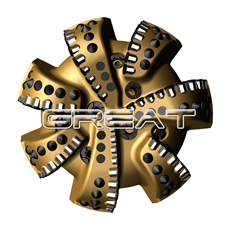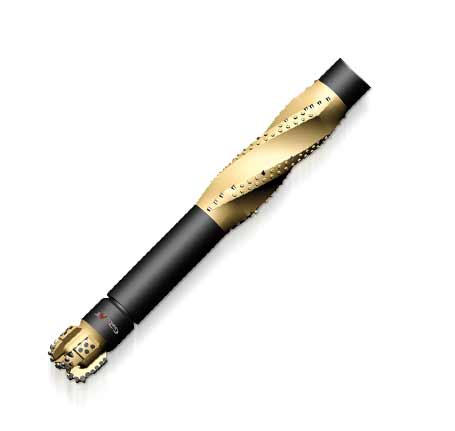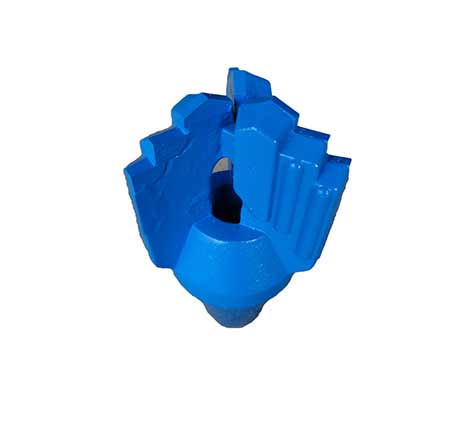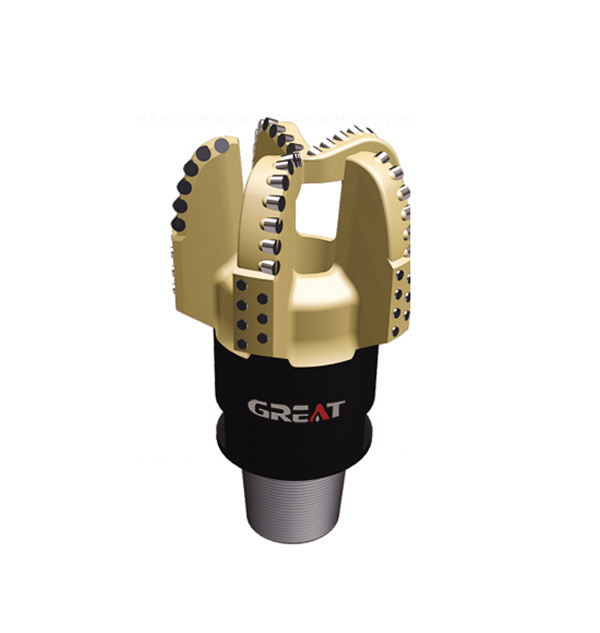Correct selection of rock reamer hole opener
To choose the rock reamer hole opener, it is necessary to consider the different rock hardness, rock length, and drilling machine tonnage. The rock reamer hole opener can be divided into metal and rubber seals, and the teeth are generally 8.5 inches, 9.5 inches, and 12.5 inches.
For short-distance construction with strong weathering small drilling machine, rubber-sealed rock reamer hole openers can be used according to the amount of work required.
For medium weathering rock and small drilling machine construction, metal-sealed rock reamer hole openers with more teeth should be selected.
For medium and weak weathering large drilling machine construction, metal-sealed large-toothed rock reamer hole openers with more teeth should be selected.
For sandy soil and mudstone formations, milling toothed rock reamer hole openers should be selected, excluding coarse sand.
The main parameters controlling the operation of the rock reamer hole opener are the push-pull force (pulling force for reverse expansion and pushing force for forward expansion) or drilling pressure applied by the drilling machine to the expander, the rotation speed, and the amount of mud pumped during the expansion.
Control points of the rock reamer hole opener
Different diameters and shapes of rock reamer hole openers require varied drilling pressure when using the rock roller drill bit. Most rock expansion accidents are caused by excessive pursuit of expansion speed and excessive drilling pressure.
The rotation speed of hole opener drill bits is another important control parameter in rock expansion construction. The rotation speed referred to here means the speed at which the drilling machine drives the drill rod and rotates the expander, and the adjustment of the rotation speed is mainly related to the hardness of the rock. In the case of soft rock expansion, when the diameter of the expander is ≤30 inches, the recommended rotation speed should not exceed 60Rpm; when the diameter of the expander is larger than 30 inches, the recommended rotation speed should not exceed 40Rpm. When drilling hard rock, the rotation speed should be correspondingly reduced, generally between 10-40Rpm. Too low a rotation speed will reduce the efficiency of the expansion, and too high a rotation speed will cause abnormal wear on the expander and even cause expansion accidents.
The important principle to follow when using a rock reamer hole opener is that the harder the rock that needs to be crushed, the greater the drilling pressure required, and the lower the required drilling speed. At the same time, it should be noted that under the same drilling speed conditions, the effect of expanders with different diameters is different. The larger the diameter of the expander, the larger the linear velocity at the outer edge, and the more serious the wear and tear.
When expanding rock layers, it is also crucial to ensure the pumping capacity of mud. At this time, mud mainly plays the role of cooling the expander and carrying the cuttings, and the actual pumping capacity of mud should be calculated and determined based on the amount of cuttings generated by each level of expansion and the carrying capacity of the mud, generally not less than 1m/min.
The construction method of expanding rock layers: When the rock reamer hole opener enters the rock layer from the soft soil layer or from the soft rock layer to the hard rock layer, the key to the operation is to first slow down the expansion speed, reduce the drilling pressure, and wait for the expander body to completely enter the rock layer or hard rock layer before increasing the drilling pressure. If too much drilling pressure is applied during this process, it is likely to cause stuck drilling, which damages the expander or at least shortens the service life of the expander bearings.
When carrying out classification expansion, attention should be paid to not choosing rock reamer hole openers with diameters that are too similar (differential diameter less than 4 inches) for classification expansion. Otherwise, on the one hand, the expected expansion effect of the expander cannot be achieved, and on the other hand, the rock layers are in danger of jamming the expanders with too similar diameters during operation.
 English
English français
français Deutsch
Deutsch Español
Español italiano
italiano русский
русский português
português العربية
العربية tiếng việt
tiếng việt ไทย
ไทย Nederland
Nederland




